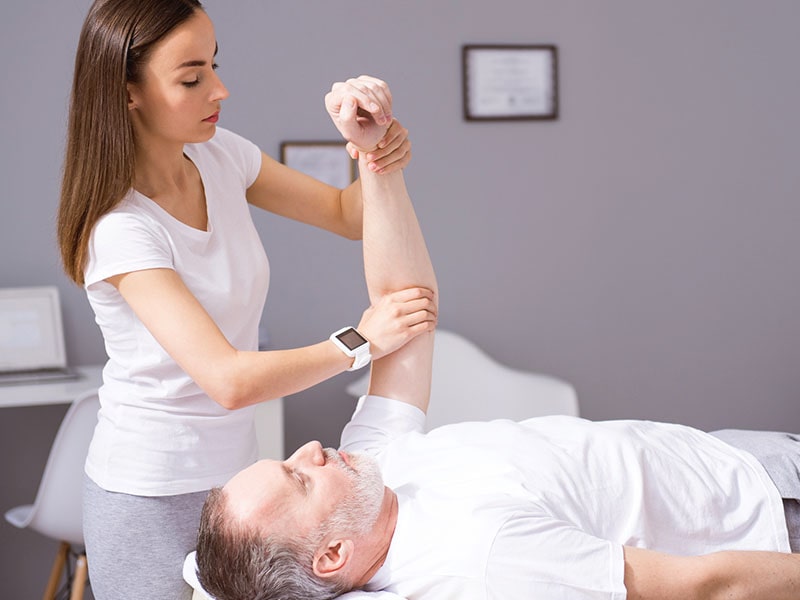
The recovery is the dream of many people who have painful and unpleasant diseases such as swelling. What can greatly help this treatment is effective rehabilitation, performed by people who have a wealth of knowledge of how to act to help, reduce swelling and, consequently, the pain of the patient.
It is rehabilitation that plays an important role in the therapy and is characterized by a really high effectiveness.
Lymphedema – what are they, why do they appear?
As the name suggests, lymphedema has much in common with lymphatic edema, which is also called lymphatic edema and circulates in the body. Swelling is caused by lymphatic stasis, which can be caused by some kind of failure of the entire lymphatic system.
As a result of the stagnation in the skin itself, as well as directly in the subcutaneous tissue, the intracellular fluid accumulates. As a result, such stagnation immediately becomes evident, leads to the effect of “swelling of the skin” of the limbs, inflammation, fibrosis and other disturbing skin changes may occur.
It is worth knowing that such stagnation should not be underestimated in any case. In extreme cases, lymphedema may lead to the so-called ivory fascination, and this is a situation in which the limbs are so swollen that their appearance resembles the skin of an elephant.
In addition, swollen skin does not perform its function so well, for example, to a much lesser extent can protect itself against insect bites.
How to diagnose lymphedema?
Lymphedema primarily attract attention with a large swelling, which can constantly increase. As a result of this process, the skin may sometimes become hardened, and unsightly growths may appear, which in their form resemble medium sized lumps.
The skin becomes slightly wavy, bulging spots may appear, as well as those that are much more sunken. As a result, swelling of the extremities becomes very heavy and you may find it difficult to move them. Foot swelling can be difficult to walk with, as swelling can be accompanied by severe pain, although this is not the case in all cases.
In some cases, the disease may not give any symptoms in the body. This situation can last for several years and is usually the first stage of the disease. The transition phase is the moment when the skin changes itself, keratoses appear, in the case of lower limbs, nail yellowing may appear.
Already at this stage, these symptoms should be a cause for concern. In the final stage, large swellings appear as a result of which the limb can be significantly distorted. The most serious and advanced stage of this disease is the elephantitis.
Here, necrosis, extensive degenerative changes, swelling is very extensive, and as a consequence, numerous complications may appear. A common cause of ivory disease is a parasitic infection with nematodes.
What is the cause of lymphoedema?
First of all, it is worth noting that the cause may be a genetic susceptibility to such swelling, and more specifically, some congenital defect of the lymphatic system. However, primary oedema is very rarely diagnosed, and if this is the case, it is usually until the age of 20, and most often in childhood. This condition is more commonly diagnosed in girls.
Another case is secondary lymphedema, which can occur:
- As a consequence of a low active lifestyle with little physical activity.
- In case of chronic venous insufficiency.
- During cancer treatment, when surgical procedures are performed in the lymph nodes.
- In cancer, when a tumor starts to press hard on the vessels.
- As a consequence of radiotherapy.
- As a result of various types of injuries and injuries.
- As a consequence of the inflammation of the lymphatic vessels, for example through viral, bacterial or fungal infections.
In fact, whatever the cause, when you notice any skin changes in your limbs or swelling, it’s best to start working immediately to stop the disease.
Thanks to treatment and rehabilitation, it is possible to avoid situations where the pain associated with swelling will be strong, there will be problems with movement, and the legs or hands themselves will no longer look aesthetic.
How to examine lymphedema?
In the case of lymphedema, even before any rehabilitation can take place, lymphedema must be examined and specified in detail. During such a diagnosis, the first important step is the interview with the patient.

During this interview, you will need to know the patient’s medical history and past medical history, get to know the symptoms you are complaining about and compare them with previous, possibly similar, illnesses that have been treated. In this way you can diagnose the cause of the disease and get to know it in detail in a way that enables preventive therapy.
Of course, an interview with a patient is not everything, because the examination itself is also necessary. It is based on a thorough examination of the affected area.
During the clinical examination, the size of swelling, the occurrence of fibrosis and hornballs, possible coloration and warming of skin fragments, as well as the diagnosis of possible infections with fungal or bacterial origin are assessed. The volume of the limb is also measured. In fact, only a very reliable clinical trial will be able to determine the stage of the patient’s disease.
The diagnosis of lymphoedema is directly connected with the measurement of the circumference of a sick limb – here it is most often possible to make a metric comparison of both limbs, i.e. the sick limb and the healthy one. It is assumed that a difference of more than 1.5 cm in circumference allows to diagnose lymphedema.
In addition, the body composition is measured, and in particular the water content of the body is measured by segments, so that it is possible to diagnose the state of lymphedema, and at a later stage observe the effects of treatment.
The ultrasound examination is also often performed, which allows to determine the condition of skin tissues. During such examination, swelling is immediately visible as a space that does not give up when the head of the device is pressed.
Another interesting example of a method of diagnostics of lymphoedema is the examination of the Kaposi-Stemmer’s symptom, and the examination consists in raising skin folds and checking whether it is possible in any place – if the skin cannot be caught in the fingers and lifted, it may indicate the occurrence of lymphoedema.
Other tests that can be performed in addition include a special platform for testing centre of gravity tilt and muscle strength moments. CT is performed on patients suspected of being involved in cancer.
What are the forms of treatment and rehabilitation of swelling?
If the diagnosis is already made, the next step is the treatment of swelling. Lymphatic drainage can be used here to help move the swelling to other places. Compression therapy is also used, which aims to lead to more effective circulation of the lymph in the body.
In extreme cases, however, the only option is surgery, which may be associated with skin necrosis. Very often it is recommended rehabilitation, so such exercises, which properly selected can help to reduce swelling and improve lymph circulation in the vessels. How the therapy will look like depends on the diagnosis and recommendations of the attending physician.
Rehabilitation should be carried out under the supervision of a person who specializes in the treatment of lymphedema, has specialist knowledge and experience.
This is important, because too intensive or wrongly selected exercises may not only fail to produce an effect, which may even worsen the patient’s condition. Appropriate rehabilitation should include frequent exercises, but they should not be characterized by too much intensity, especially during the first meetings.
Among the proposed exercises can certainly include breathing exercises, as well as exercises that are generally designed to improve the condition of the body. The alternate lifting of the limbs upwards also gives good results.
A popular form of rehabilitation is also compression therapy, which is also called compression massage or bandaging. For this purpose, you can use various types of products that cause pressure on the limbs – tights, bands or knee-length socks.
It is assumed that what is largely conducive to the appearance of swelling is stagnation and stillness. Therefore, during rehabilitation, when we do not perform exercises can be used manual massage. It allows you to stimulate the entire bloodstream, helps improve lymph flow and is actually considered one of the most effective ways to fight swelling.
During rehabilitation, we can also be offered a vibration massage, which is performed with the use of specific instruments, pneumatic massage, whirlpool massage or electrostimulation of healthy muscles.
During the rehabilitation it is also worth to take special care of your skin. The appearance of swelling and then pressing the skin, massages and physical exercises can severely strain it, so it is worthwhile to additionally use preparations that will allow it to rebuild.
Checking the effects of rehabilitation
Thanks to the applied rehabilitation, visible swelling can be reduced or even completely eliminated. Many treatments offered as part of rehabilitation also have a relaxing effect.
It is also worth noting that a number of proposed exercises and methods of coping with swelling can be later used prophylactically during exercises at home.
Thanks to rehabilitation, you can also improve your condition and motor skills. So certainly rehabilitation is a great idea to treat swelling, but also generally improve the condition of your body.


 SEO for E-Commerce Platforms
SEO for E-Commerce Platforms  Air Conditioning Repairs You Should Know About
Air Conditioning Repairs You Should Know About  Sea Moss into Your Daily Meals
Sea Moss into Your Daily Meals  Data Storage for Personalized Medicine
Data Storage for Personalized Medicine